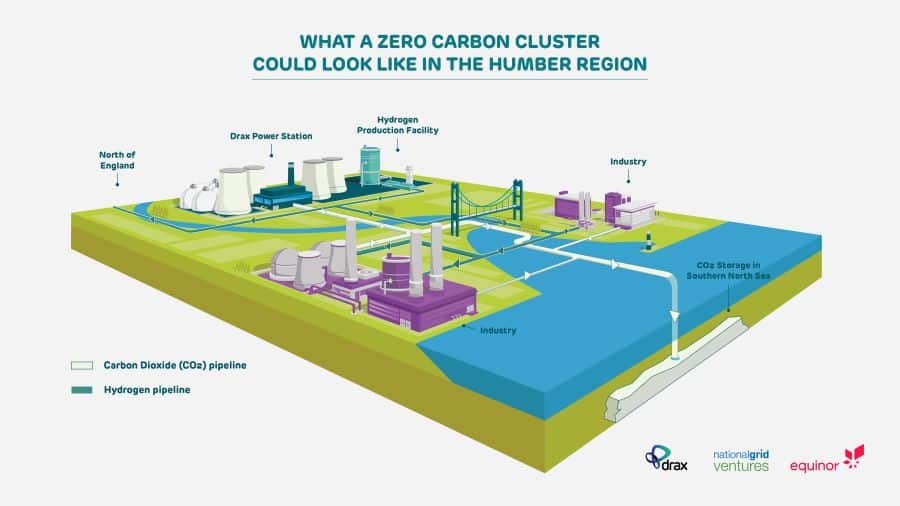Drax pitches zero carbon vision for Humber industry
A consortium led by Drax Group has unveiled plans for transforming the Humber industrial region into a zero carbon cluster using hydrogen, biomass and carbon capture.

The partnership will see Drax working alongside National Grid Ventures and Norwegian energy company Equinor. Together, the three plan to integrate a low-carbon energy system that would see hydrogen production co-located at the existing Drax Power Plant, which currently burns a mixture of biomass and coal. This hydrogen would then be supplied to local industry to help it decarbonise.
Drax’s bioenergy carbon capture and storage (BECCS) pilot – which is today collecting one ton of CO₂ per day - would be scaled up massively to capture 40,000 tons of CO₂ daily from the plant’s four biomass burning units. The plans also call for the construction of a pipeline to carry captured CO₂ from Drax and local industrial plants to the Endurance and Bunter aquifer in the North Sea, where it would be permanently sequestered. According to Drax, the BECCS project could see the power plant become carbon negative by the 2020s.
Register now to continue reading
Thanks for visiting The Engineer. You’ve now reached your monthly limit of news stories. Register for free to unlock unlimited access to all of our news coverage, as well as premium content including opinion, in-depth features and special reports.
Benefits of registering
-
In-depth insights and coverage of key emerging trends
-
Unrestricted access to special reports throughout the year
-
Daily technology news delivered straight to your inbox










Water Sector Talent Exodus Could Cripple The Sector
My local water company is Severn Trent which has a market capitalisation of £8.2 billion, made a pre-tax profit of £200 million in 2024 and is paying...